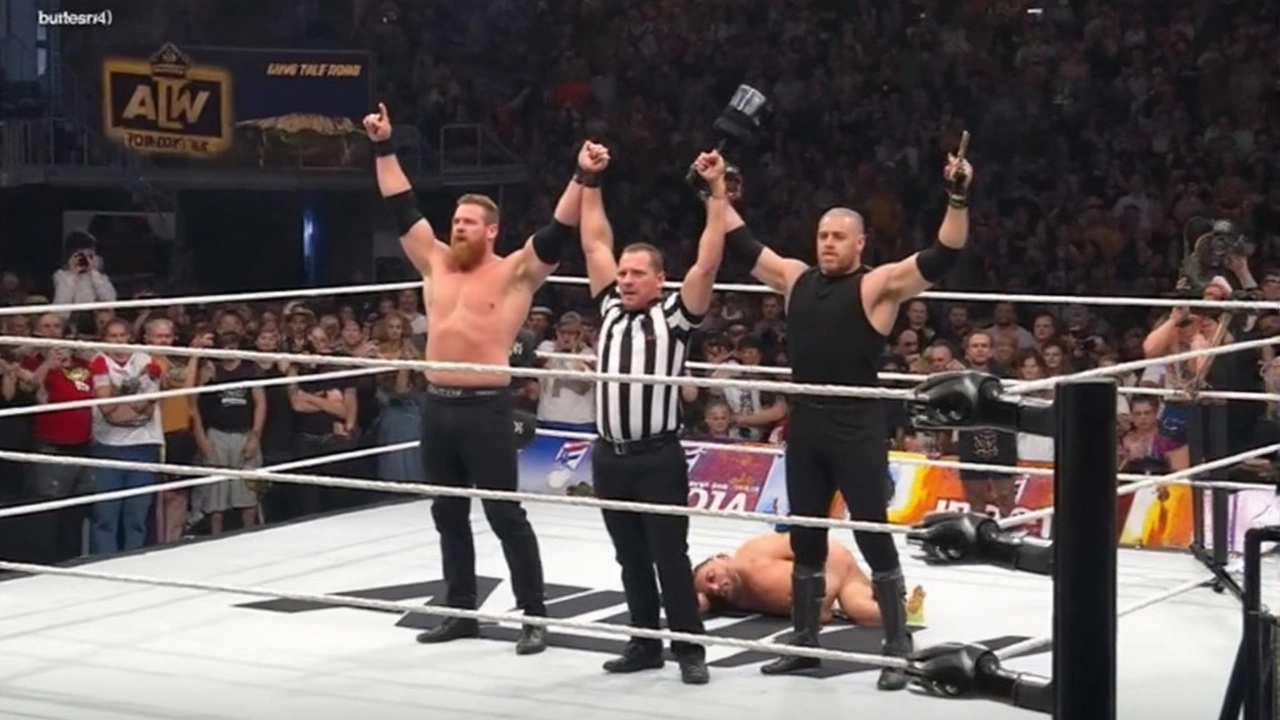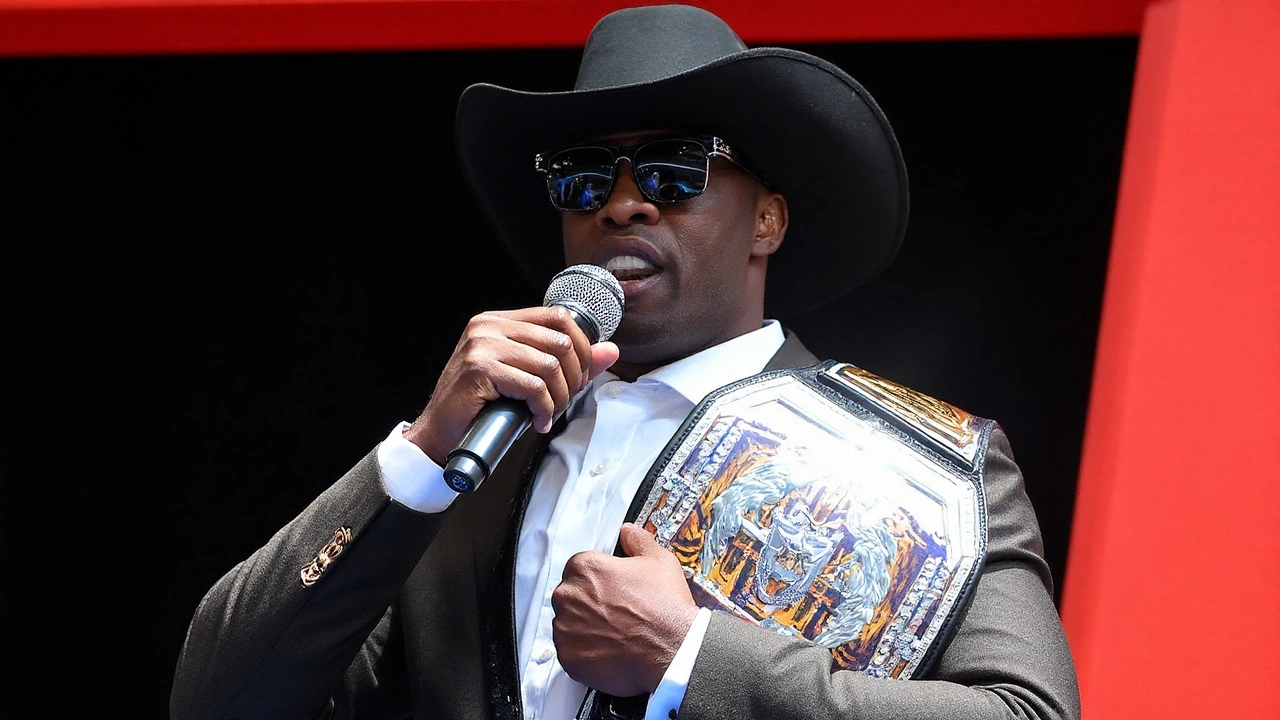A first for London—and for the supercard
For the first time, the AEW x NJPW supercard is leaving North America. Forbidden Door 2025 lands at London’s O2 Arena on Sunday, August 24, pushing the annual crossover to a new continent and a new month on the calendar. It’s the fourth edition of the event, but the first outside the U.S. and Canada—and the first scheduled for August, not June.
The main card is set for 1 p.m. ET / 10 a.m. PT, a daytime start for North America that lines up with prime-time viewing in the UK. Expect a raucous O2 crowd to set the tone during the Zero-Hour pre-show, which features four matches plus interviews, backstage segments, and analysis. Zero-Hour traditionally rolls one hour before the main broadcast, and that’s the plan here too.
The draw is simple: stars and styles you rarely see in the same ring at the same time. Talent from AEW, New Japan Pro-Wrestling, World Wonder Ring Stardom, Mexico’s CMLL, and the UK’s RevPro are on the bill. That mix gives you strong-style, lucha libre, British technical wrestling, and AEW’s high-velocity main-event pace in one night.
This event didn’t appear out of nowhere. The first Forbidden Door in 2022 packed Chicago’s United Center and delivered crossover bouts that fans argued about for months. A year later in Toronto, Bryan Danielson defeated Kazuchika Okada in a shock finish with a broken forearm. That same 2023 show hosted a violent modern classic between Will Ospreay and Kenny Omega. In 2024 on Long Island, the concept tightened up, blending title defenses with dream matches. London is the next logical leap.
The O2 Arena is a fitting stage. It’s one of the most active indoor venues in Europe, with a concert-ready setup, a ceiling built for lighting rigs, and acoustics that make crowd chants sound twice as loud. British wrestling has been on a long resurgence, and the building sits right in the middle of that, a quick ride on the Jubilee line for thousands of fans. The UK fanbase—songs, banter, and all—tends to become part of the show.
This year also marks a streaming milestone. The event will be available for purchase on Prime Video, another sign that Amazon is leaning further into live sports and combat entertainment. It’s a clean on-ramp for casual viewers who already use the app and a wider pipeline for international fans who want a single place to buy major shows.

Card, stories, and how to watch
Headlining London is a Lights Out Steel Cage Match with a cast built to make the O2 shake: Will Ospreay, Kenny Omega, Kota Ibushi (reuniting the Golden Lovers with Omega), Hiroshi Tanahashi, Darby Allin, Jon Moxley, Claudio Castagnoli (as part of the Death Riders), The Young Bucks (Nick and Matt Jackson), and Gabe Kidd. In AEW, “Lights Out” means unsanctioned: no disqualifications, no count-outs, and the result doesn’t hit the official records. Add the steel cage and you get a chaotic, high-risk fight where grudges take priority over strategy.
For Ospreay, wrestling in London adds a personal twist—home-country energy for a performer who thrives on big-match pressure. Omega’s history with Ospreay is already etched in recent lore, with their 2023 Toronto showdown still replayed for its crescendos and nasty bumps. With Kota Ibushi back in the mix alongside Omega, the emotional stakes climb. Across the ring you’ve got Tanahashi, the Ace of New Japan, and a violent axis formed by Moxley and Castagnoli. The Bucks bring speed and aerial chaos. Kidd, a rising force out of NJPW’s heavyweight ranks, has a reputation for physicality. In a cage, all of that turns into a blender.
On the title front, the AEW World Championship sees “Hangman” Adam Page defending against MJF. Page is a champion who leans into grit more than flash; he throws heavy lariats and digs deep when the pace gets ugly. MJF is the opposite: surgical with momentum, mean with the mind games, and more than happy to grind down a limb if it buys him the next five minutes. Both men have carried the AEW top belt before. This one feels like a referendum on where AEW’s main-event identity sits in 2025—cowboy grit vs. calculating charisma.
The AEW Women’s World Championship brings a champion vs. champion twist. “Timeless” Toni Storm puts her belt on the line against ROH Women’s World Champion Athena. Storm has turned the clock back with the old-Hollywood persona but kept the edge sharp between the ropes: snap DDTs, hip attacks that change matches, and a mean cross-body that lands heavier than it looks. Athena has bulldozed her way through Ring of Honor’s division with stiff strikes and an aggressive pace. When a champion meets a champion, the drama isn’t just about a pin—it’s about who walks out with the louder claim to control women’s wrestling that weekend.
Kazuchika Okada defends the AEW Unified Championship against Swerve Strickland. Okada’s presence brings an aura; even on a crossover card, he wrestles like the room bends around him. Swerve, by contrast, is a constant burst of movement and creativity—angles, footwork, and sudden traps that make a heavyweight look like he’s stuck in sand. Unified title or not, the real story is rhythm: can Okada slow the match into his signature stretches, or does Swerve force sprint after sprint until someone blinks?
New Japan’s top prize is also in play: the IWGP World Heavyweight Championship, with Zack Sabre Jr. defending against Nigel McGuinness. Sabre is Britain’s submission puzzle-maker—every joint is a target, every escape route a feint. McGuinness, now best known to AEW fans as a broadcast voice, steps into the ring in a rare challenge for NJPW’s crown. Stylistically, this one leans toward grappling and pressure: less about big slams, more about who can make the other breathe heavier, sooner. It’s also a UK homecoming of sorts for both men, with crowd sentiment likely split right down the aisle.
The AEW TNT Championship pits Kyle Fletcher against Hiromu Takahashi. Fletcher’s year has shifted him from promising tag standout to a singles player who can carry a TV belt. Takahashi is chaos wrapped in color—pace, risk, and a knack for hitting top speed without warning. TNT title matches often live in that 12–15 minute window, and that format suits both: quick acceleration, momentum swings, and a finish that can come from a blink-and-miss transition.
On the TBS Championship side, Mercedes Moné defends in a four-way against challengers pulled from AEW, CMLL, and Stardom. That setup is a style lab. AEW brings explosive power and character-forward offense. CMLL’s luchadoras weave speed with rope work and leverage pins that appear out of nowhere. Stardom’s top workers mix crisp strikes with tight sequences and head-drop suplexes used surgically, not recklessly. Four-ways reward awareness more than raw strength; Moné’s ring IQ and knack for timing are the traits to watch.
Expect tag action to feature partnerships built for this weekend alone and others forged over years. The Hurt Syndicate—positioned as a bruising unit—are on the slate, as are tournament winners from partner promotions. And there’s a nod to long-running rivalries with a bout involving Adam Copeland and Christian Cage, two names who carry decades of history into every lock-up. These matches often become highlight reels for chemistry: how fast can a new pairing find a double-team groove, and how sharp are the veterans when the room starts to tilt?
The pre-show, Zero-Hour, is more than a warm-up. Four matches give prospects and visiting names a platform, while the broadcast fills gaps with backstage interviews, quick-hit video features, and desk analysis from inside the arena. If you like to understand who’s who before the chaos, Zero-Hour is where you meet the visiting champions, learn the grudges, and clock which finishers you should fear. Plan for it to begin an hour before the stated main card time—so 12 p.m. ET / 9 a.m. PT, which lines up with early evening in London.
In the building, the cage match will draw eyes, but the technical showcase might be Sabre vs. McGuinness if it gets the room quiet enough to hear the small things—breathing, mat slaps, the shift of weight before a counter. For spectacle, the Steel Cage Lights Out bout is the all-in bet: ten humans, two sides, one unforgiving fence, and no pretense of order. Somewhere between those poles live the title fights that make or break careers.
What makes Forbidden Door work is that it treats the “pro” in professional wrestling as a global passport. AEW’s broadcast style meets New Japan’s insistence on clean athletic storytelling. Stardom’s precision meets the wildness of CMLL. RevPro adds a local accent. The result is a card that feels like a museum and a street fight at the same time—history on the wall, dust in the air.
From a business angle, the London stop matters. It plants AEW’s flag in one of the world’s busiest arenas, strengthens ties with RevPro on home turf, and gives New Japan a major European spotlight. Amazon’s Prime Video carriage brings a tech giant into the room with a product built for social clips and live buzz. If the night lands, don’t be shocked if the August switch sticks and Europe becomes a regular part of the rotation.
How to watch: the show is available to purchase on Prime Video. The main card begins at 1 p.m. ET / 10 a.m. PT, with Zero-Hour starting an hour earlier. In the UK, that puts the main card in the early evening, a friendly slot for families and fans traveling in for the day. If you’re planning a full Sunday, block out the afternoon—this is not a short card, and the post-match fallout tends to spill over into the weekly shows.
The promise of Forbidden Door is simple: matches you can’t stage without multiple companies shaking hands. The London edition doubles down on that idea, blending champions from five promotions, a headline fight that ignores the record books, and a venue built to amplify every chant. However the belts land, the night will test alliances, invite new ones, and leave a few grudges welded to that steel.
